
COSHH Assessments | How To Control Exposure
/The third step in completing your COSHH Assessments is the point at which you ask “we have the data, but what can we do to reduce and control exposure?” For this, we go back to the COSHH hierarchy of control: Elimination This is the gold standard for how to control exposure, but it is one […]
Read more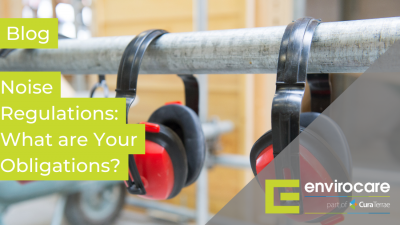
Noise Regulations: What Are Your Obligations?
/A Brief Guide To UK Noise Regulations Noise Regulations act as a safety net due to noise being a common issue in most industrial environments we carry out work in, whether it be the hum of a production line in a printing works or the short, sharp noise of a hammer hitting a metal unit […]
Read more
NOx Emissions: A Pollutant Focus
/What Is NOx? NOx emissions / Oxides of Nitrogen is a term for the mono-nitrogen oxides Nitric Oxide (NO) & Nitrogen Dioxide (NO2) and their oxidation products, principally Nitric Acid (HNO3). Oxides of Nitrogen are a significant air pollutant particular in urban areas where vehicular and industrial contributions are more prevalent. Oxides of Nitrogen are […]
Read more
COSHH Precautions In The Workplace
/The second step of the COSHH Risk Assessment process is to decide what COSHH precautions are required. For this, we look at the five W’s and an H: What? What does the process involve? What materials are involved? Does the work involve working in the breathing zone, and are the materials listed as hazardous on […]
Read more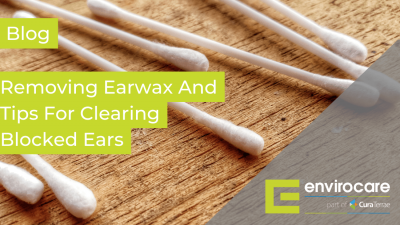
Removing Earwax And Tips For Clearing Blocked Ears
/Envirocare provide Workplace Hearing Tests and occupational ear examinations to companies within the UK. This article aims to help people in removing earwax or clearing blockages caused by wax. We regularly provide the below advice to anyone we encounter whose ear drums or ear canals appear to show a large build up of earwax. Here are some of the things […]
Read more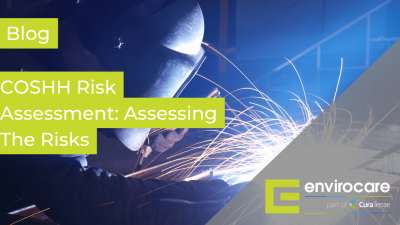
COSHH Risk Assessment – Assessing The Risks
/What Is A COSHH Risk Assessment? A COSHH (Control of Substances Hazardous to Health) risk assessment will identify substances and activities where there may be exposure to hazardous substances, used or generated, which may damage health. It’s about taking sensible steps to prevent ill health to employees and visitors. The aim of an assessment is to know […]
Read more
What Is COSHH? Everything You Need To Know
/We’re often asked the question ‘What is COSHH?’. So we’ve decided to create an article which aims to define COSHH in simple terms. We have supplied supporting information so that you have everything you need to know in order to run your operations safely, efficiently and profitably. So, What Is COSHH? The term COSHH stands for ‘Control of […]
Read more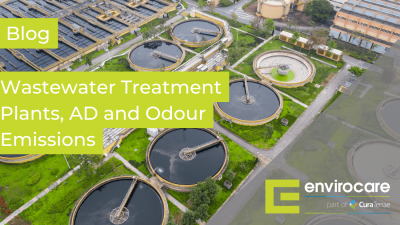
Wastewater Treatment Plants, Anaerobic Digestion, and Odour Emissions Explained
/Anaerobic digestion can and is playing a huge role in creating a potential fuel source from waste that is otherwise seen to have little use. Within the wastewater treatment industry, sludge is produced as a waste and has to be disposed of safely and effectively, which is where anaerobic digestion can play an important role […]
Read more
Combined Heat and Power Plant Emission Regulations
/Many Anaerobic Digestion (AD) facilities incorporate Combined Heat and Power (CHP) Plants to make efficient use of the biogas created by the process. As has previously been discussed in our What Is Anaerobic Digestion and Biogas and Anaerobic Digestion Process: From Waste To Energy articles, AD of organic material produces two outputs, namely digestate and […]
Read more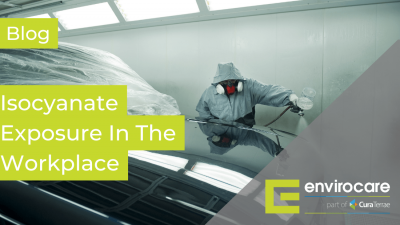
Isocyanate Exposure In The Workplace
/Recently, the Health and Safety Executive won a case against a paint spraying company in Derbyshire who had not complied with a number of improvement orders related to isocyanate exposure. The defendant was fined a total of £5,600 in fines and court costs. What Are Isocyanates? First, a bit of chemistry, isocyanates are organic (carbon […]
Read more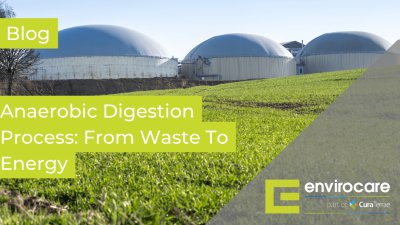
Anaerobic Digestion Process: From Waste To Energy
/Anaerobic digestion is the process of micro-organisms breaking down organic material in the absence of oxygen. After mixed waste has been segregated and the inorganic recyclable fractions removed, the organic fractions enter the AD process. The Anaerobic Digestion Process Organic waste material (for example food wastes or sewage sludge) is stored in an oxygen free […]
Read more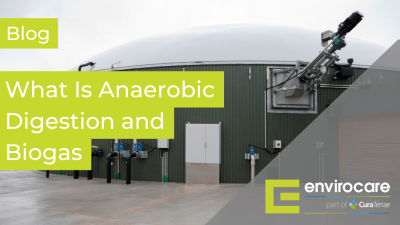
What is Anaerobic Digestion and Biogas?
/What is Anaerobic Digestion? Anaerobic Digestion is the process of micro-organisms breaking down organic waste material – also known as feedstock – in the absence of oxygen. The process happens naturally, for example in soils, but is becoming increasingly popular as an athropogenic solution for dealing with organic wastes. The outputs from anaerobic digestion are […]
Read more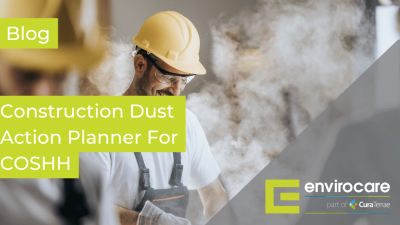
Construction Dust Action Planner For COSHH
/Ensuring your company is both compliant with all the relevant health and safety legislation and COSHH Workplace Exposure Limits can be difficult and confusing. How do you know if the dust levels within your workplace are excessive? Or if your employees are wearing the correct PPE? That’s why we’ve put together this Construction Dust Action Planner to help […]
Read more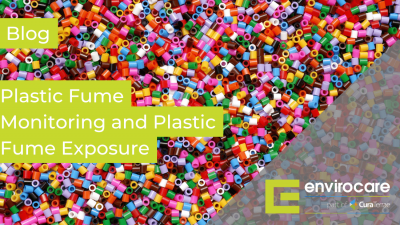
Plastic Fume Monitoring and Plastic Fume Exposure
/There are numerous types of plastics used throughout industry in a range of applications. Plastics are generally based on polymers, which are large strands based on multiple units of small molecules. For example, polystyrene, which looks like this: The plastic materials themselves are not an issue and from an occupational hygiene point of view, would need to […]
Read more
Medium Combustion Plant Directive Emission Limits
/The European Parliament’s Environment, Public Health and Food Safety Committee have voted to enforce limits upon medium combustion plant emissions for sulphur dioxide and nitrogen oxide under draft plans titled ‘Limitation of certain pollutants into the air from medium combustion plants’. The draft sets out emission limit values for facilities / combustion plants which burn fuel […]
Read more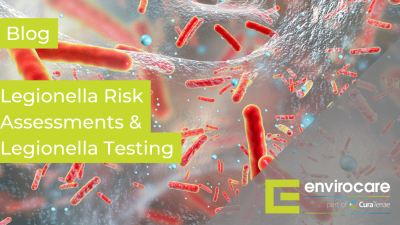
Legionella Risk Assessments & Legionella Testing
/Legionella is a reportable disease under the Reporting of Injuries, Diseases and Dangerous Occurrences Regulations (RIDDOR), and since 2011, there have been 59 cases reported in the Yorkshire and the Humber region of the UK alone. Legionella is water borne infection caused by the bacteria Legionella pneumophila (L.pneumophila) and while the numbers already appear low, […]
Read more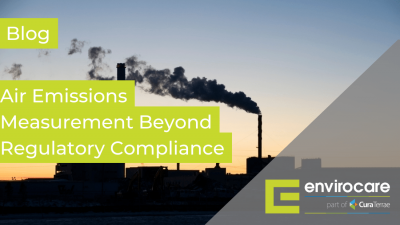
Air Emissions Measurement Beyond Regulatory Compliance
/Over the course of a couple of blog articles we’ve outlined the importance of Health and Safety When Monitoring Emissions and some of the many important reasons Why To Choose MCERTS Accredited Emissions Monitoring. As we continue our series of stack emissions monitoring articles, we look at the many other reasons besides regulatory compliance for requiring air emissions […]
Read more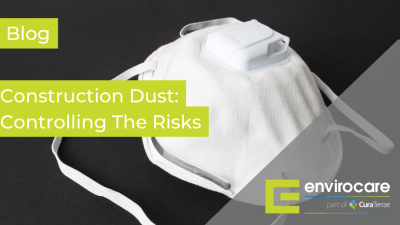
Construction Dust: Controlling The Risks
/Construction Dust Risks A new Construction Dust Industry Survey released by both IOSH and CDP aimed to provide an insight into issues associated with on-site dust risks, how they are controlled and show that airborne dusts are a major cause of ill health in the construction industry. In Great Britain alone, there are over 500 deaths each year from Silica […]
Read more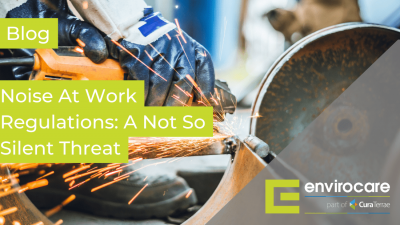
Noise At Work Regulations: A Not So Silent Threat
/Noise At Work Regulations: A Not So Silent Threat Did you know that in 2014 there were over 18,000 reported cases of Noise-Induced Hearing Loss in the UK that noise at work regulations aim to reduce? Noise at work can cause permanent and disabling hearing damage, generally speaking hearing loss is a gradual process, caused by […]
Read more
Envirocare Celebrate 20 Years of Service
/Envirocare Celebrate 20 Years of Service October heralded 20 years as a business for Bradford based Envirocare, one of the UK’s leading Environmental and Occupational Hygiene & Safety consultancies. The company was originally formed in 1994 by Tony Smith, Keith Edmondson and Alden Phillips, three highly qualified individuals who had previously worked as independent consultants […]
Read more
Envirocare Launch Major Rebrand
/Bradford based Envirocare Technical Consultancy Ltd, one of the UK’s leading Environmental and Occupational Hygiene Consultancies has undergone a total brand review following a period of expansion for the business, and as of today will see the company implement a new visual identity, tagline and online presence to support its future plans, evolution and growth. […]
Read more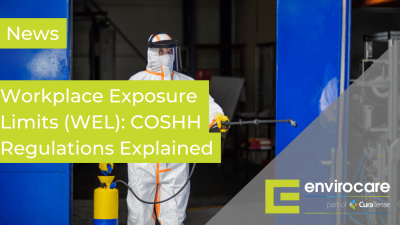
Workplace Exposure Limits (WEL): COSHH Regulations Explained
/What Are Work Place Exposure Limits? Nearly all industry regulated by the Health and Safety Executive (HSE) is affected in some way by the COSHH regulations. For example, those using paints in the coating of manufactured products, solvents in the printing industries, silica and metals used in foundries, wood dust in furniture production and disinfectant […]
Read more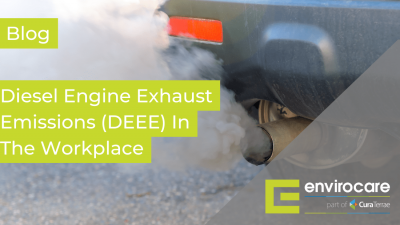
Diesel Engine Exhaust Emissions (DEEE) In The Workplace
/Diesel Engine Exhaust Emissions Exhaust fumes from diesel engines do cause cancer, a panel of experts working for the World Health Organization said at a meeting this summer. It concluded that the exhausts were definitely a cause of lung cancer and may also cause tumours in the bladder. It based the findings on research in […]
Read more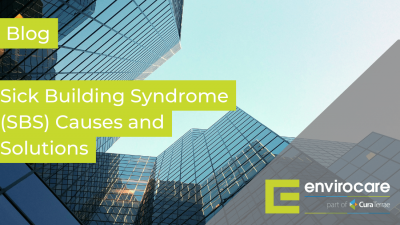
Sick Building Syndrome (SBS) Causes and Solutions
/What Is Sick Building Syndrome? Sick Building Syndrome (SBS) is a term used to describe a set of symptoms experienced by workers in a particular environment. It has been recognised as a phenomenon by the World Health Organisation (WHO) since 1982. Extensive studies by the HSE have estimated between 30 and 50% of new or […]
Read more